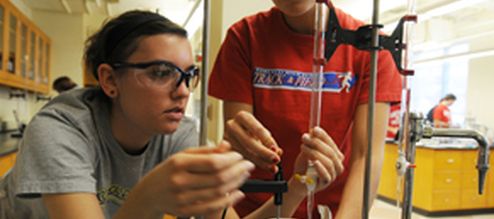Characterization of the Electrophile Binding Site and Substrate Binding Mode of the 26-kDa Glutathione S-transferase from Schistosoma japonicum
Document Type
Article
Publication Date
2003
Publication Source
Proteins
Abstract
The 26‐kDa glutathione S‐transferase from Schistosoma japonicum (Sj26GST), a helminth worm that causes schistosomiasis, catalyzes the conjugation of glutathione with toxic secondary products of membrane lipid peroxidation. Crystal structures of Sj26GST in complex with glutathione sulfonate (Sj26GSTSLF), S‐hexyl glutathione (Sj26GSTHEX), and S‐2‐iodobenzyl glutathione (Sj26GSTIBZ) allow characterization of the electrophile binding site (H site) of Sj26GST. The S‐hexyl and S‐2‐iodobenzyl moieties of these product analogs bind in a pocket defined by side‐chains from the β1‐α1 loop (Tyr7, Trp8, Ile10, Gly12, Leu13), helix α4 (Arg103, Tyr104, Ser107, Tyr111), and the C‐terminal coil (Gln204, Gly205, Trp206, Gln207). Changes in the Ser107 and Gln204 dihedral angles make the H site more hydrophobic in the Sj26GSTHEX complex relative to the ligand‐free structure. These structures, together with docking studies, indicate a possible binding mode of Sj26GST to its physiologic substrates 4‐hydroxynon‐2‐enal (4HNE), trans‐non‐2‐enal (NE), and ethacrynic acid (EA). In this binding mode, hydrogen bonds of Tyr111 and Gln207 to the carbonyl oxygen atoms of 4HNE, NE, and EA could orient the substrates and enhance their electrophilicity to promote conjugation with glutathione.
Inclusive pages
137–146.
ISBN/ISSN
0887-3585
Copyright
Copyright © 2003, Wiley‐Liss
Publisher
John Wiley & Sons
Volume
51
Peer Reviewed
yes
Sponsoring Agency
National Institutes of Health
eCommons Citation
Cardoso, Rosa M. F.; Daniels, Douglas S.; Bruns, Christopher M.; and Tainer, John A., "Characterization of the Electrophile Binding Site and Substrate Binding Mode of the 26-kDa Glutathione S-transferase from Schistosoma japonicum" (2003). Chemistry Faculty Publications. 105.
https://ecommons.udayton.edu/chm_fac_pub/105
COinS



